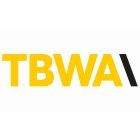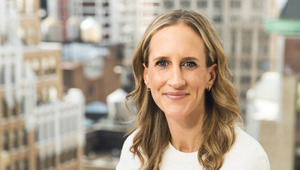
Production Line: John Doris on the Producer as Conductor

John Doris is the head of integrated production at TBWA\Chiat\Day New York, leading production across the entire agency. Prior to joining TBWA at the beginning of 2018, he held the same title at Saatchi & Saatchi New York and was a longtime curator of the Saatchi & Saatchi New Directors' Showcase.
He chats to us as we continue our ongoing dialogue with leading ad agency producers.
LBB> What lasting impact has the experience of the pandemic had on how you and TBWA think about and approach production?
John> Mapping out the production plan and approach early on, in lockstep with creatives, helped keep things moving and also gave clients the confidence to invest in work in the early stages of the pandemic. We developed a tight production plan for every creative presentation, along with a plan B and plan C anticipating various contingencies.
Given the uncertain times we’re in, this process has not changed and I think it’ll continue beyond the pandemic. It’s made us explore alternate avenues and be more open minded in our approach — whether that be remote shooting, drop kits, new shoot centres, talent or partners. That can only be a good thing for us as producers.
LBB> Aside from Covid-19, what have been the most disruptive forces to hit agency production in the past few years?
John> Increased diversity in production has been a necessary and welcome disruption to production in the past few years.
Our approach at TBWA\Chiat\Day New York is to treat diversity, equity and inclusion as a client, helping us think about how we work, act, and treat each other. Within agencies, clients are always a top priority, and diversity receives this same level of prioritisation and dedication. A mighty 100-person volunteer team at the agency is driving the effort with dedicated time, measurable goals, and the organisation’s full backing.
Alongside changing our systems and processes to better recruit talent from diverse backgrounds at all levels, we are committed to diversity within our bids, ensuring we have at least one director from an underrepresented group within every triple bid. This diversity also extends to all vendors and individuals we partner with on all projects.
LBB> A good producer should be able to produce for any medium, from film to events to digital. Do you agree?
John> Yes and no. The dream is to have a producer who can produce across film, print, digital and experiential. These people are out there, but you have to beware of the ‘Jack of all trades, master of none’. For me it’s about building a team that allows as much flexibility as possible when it comes to resourcing. Ultimately the quality of the actual talent is key.
LBB> And leading on from that, when it comes to building up your team at the agency, what’s your view on the balance of specialists vs generalists?
John> I truly believe talent is key to crafting and executing the best creative work. The producer is like the conductor and should constantly be bringing ideas to the table to help elevate the creative idea. In short, you need a mix of generalists and specialists. A few key specialists across disciplines who are the experts in their area, mixed with generalists.
LBB> What’s your own pathway to production? When you started out, what sort of work were you producing and what lessons have stayed with you in that time?
John> I was trained the hard way at Saatchi London working as an assistant for two senior EPs for a few years. I learned a lot, but I had to put the years in. They were tough, but it’s because they cared about the product and the process. They taught me that a good process leads to a good product.
I believe in sweating the small stuff and the big stuff. As you only get one shot in production, be prepared and do the legwork. Also never stop experimenting and trying things down to the very last minute. A voiceover, a mixer or a music track can be the difference from something being average or great. Discuss it early and ensure the team is constantly thinking.
LBB> If you compare your role to the role of the heads of TV/heads of production when you first joined the industry, what do you think are the most striking or interesting changes (and what surprising things have stayed the same?)
John> In my opinion the biggest change has been volume! We’re producing an array of content across multiple platforms. When I started out it was basically a :60 or a :30 and that was it — all in one format too. Deliverables nowadays go into the hundreds on any given shoot across multiple mediums and formats.
LBB> When working with a new partner or collaborator, how do you go about establishing trust?
John> You normally know from initial calls and good old-fashioned chemistry, while also looking at the individual and/or company’s previous work. You’re working with them for a reason, so they need to be given the space to do what they do best. Trust has to work both ways and it’s important both sides are open, honest and collaborative.
LBB> What are your thoughts on the involvement of procurement in production?
John> They’re my favourite! Ha. Honestly, the good ones can be really helpful. I find if you make them your partner and really bring them into the process, they can be helpful and work to your advantage.
LBB> When it comes to educating producers how does your agency like to approach this?
John> The best way to learn is by doing. I try not to hold people back for too long and throw them in where it makes sense. You only learn by being exposed. We’ve had incredible success building teams on projects where an art producer is paired with a film producer but they both work together.
As a result, they see what each is doing and learn what’s involved — gradually they can build the knowledge to work across disciplines.
LBB> What new skills have you had to add to the team as a result of the pandemic?
John> No particular roles. Rather, an extended rolodex of partners and vendors and ways to approach things differently where necessary.
LBB> Should production have a seat in the C-suite - and why?
John> Absolutely. Production is the execution of all the thinking and hard work and what ultimately goes out into the world. It’s part strategy, part account and part creative, and ultimate responsibility for the end product. Not to mention holding the client’s budget and making sure it’s spent and used in a responsible way. It’s also a great source of revenue if approached correctly, especially with many agencies having their own production studios in house.
I’m fortunate enough to be part of the C-suite at TBWA\Chiat\Day NY and very thankful for the support and partnership I receive. It’s also important for the department to know production has a seat at the table.
LBB> Clients’ thirst for content seems to be unquenchable - and they need content that’s fast and responsive! What’s the key to creating LOTS of stuff at SPEED - without sacrificing production values? Is it even possible?
John> More isn’t always more. We have to question what we’re making, why we’re making it and where it will live. It all has to be working hard, otherwise it’s just more for more’s sake. Then it comes down to the idea and how we execute efficiently across an ecosystem. It’s then important to pick the right approach and level of production based on the idea and budget.
We may shoot with our in-house production team Redslash, it may be influencer-led or a combination of things. This is why production is involved in the process from ideation, able to build the right team and solution as the ecosystem comes together.
Often, production realities lead an idea and execution. Creative and production really have to work hand in hand more than ever. A producer’s job is to constantly build an arsenal of solutions and have the best one ready to go as soon as it’s needed.
LBB> To what extent is production strategic - traditionally it’s the part that comes at the ‘end’ of the agency process, but it seems in many cases production is a valuable voice to have right up top - what are your thoughts/experiences of this?
John> We’re involved in the creative process from ideation through to implementation. Once creative approval is received, we also have a pre-vetted production plan approved to fit the budget and schedule. Then we can just get making!
LBB> And what advice would you give to an aspiring agency producer?
John> Be a strong voice and make a difference. Production has never been more valued, and you have the freedom and opportunity to take the lead and push the boundaries. To bring new ideas to the table, you need to be curious and constantly learning and discovering. Showcase to creatives why you’re a difference maker — these relationships will be invaluable.












